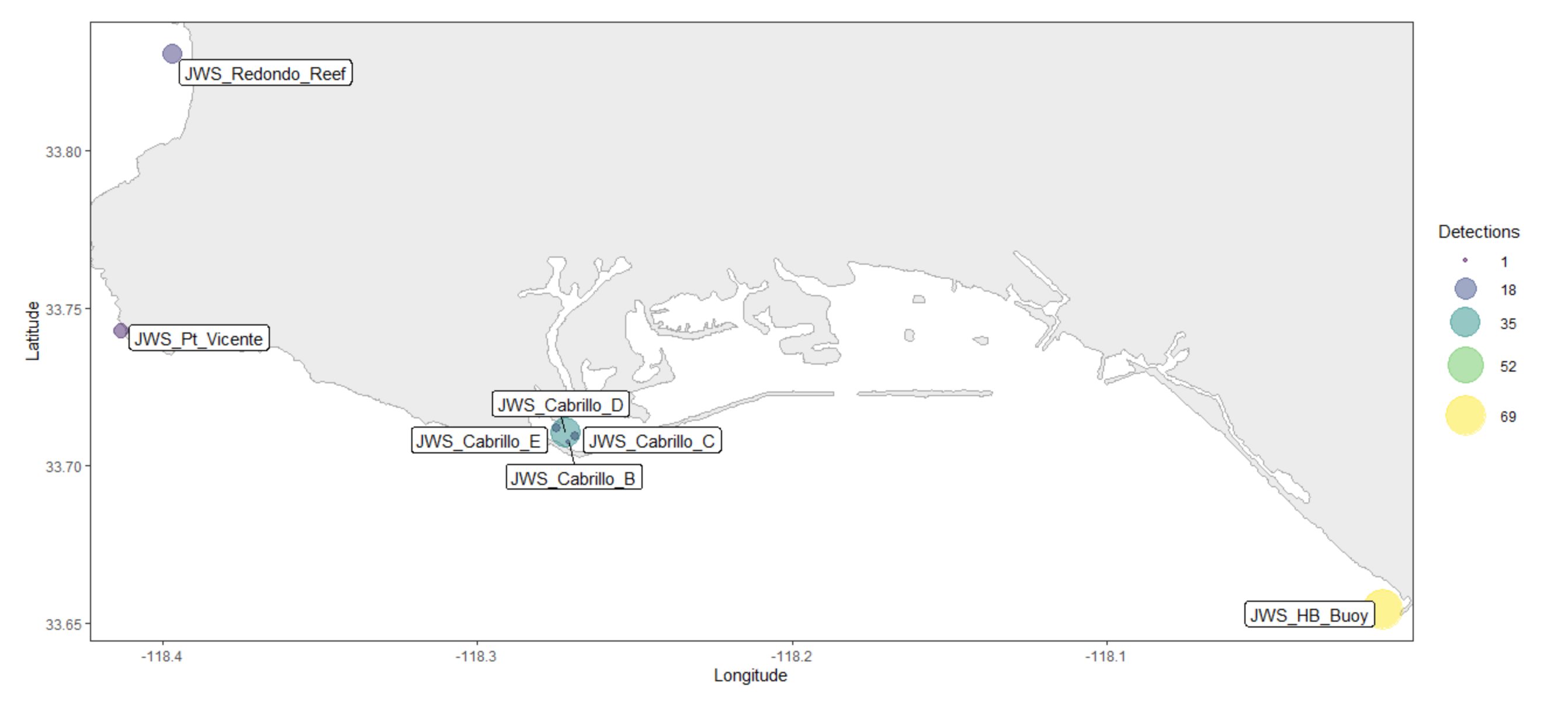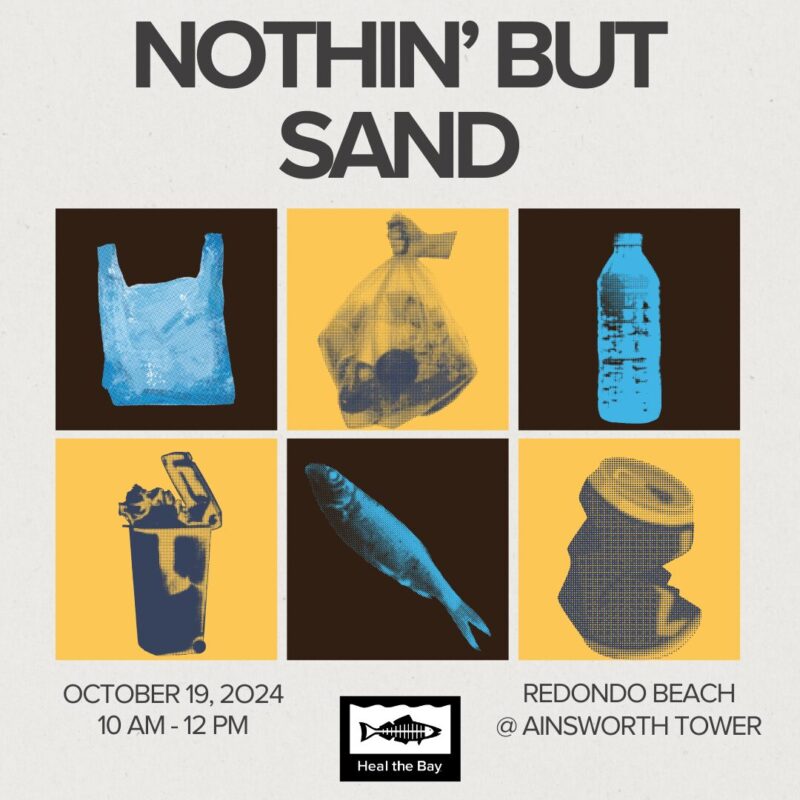The Journey of Our Released Giant Sea Bass and How Oil Spills Impact Future Generations of Fish
Laura Rink, Associate Director of Aquarium Operations shares an update on where our released Giant Sea Bass is swimming in the Santa Monica Bay and the impacts of the recent oil spill on fish eggs.
When an animal is released into the wild, there are assumed risks. Transport logistics to the release, acclimation into a foreign environment, predation, inability to find food sources, and natural diseases are all concerns our Heal the Bay Aquarium team had when releasing the beloved Giant Sea Bass (Stereolepis gigas), whom we fondly refer to as GSB, into the Redondo Beach King Harbor in May 2021.
Over the subsequent months we were delighted to observe the fish’s journey in local waters.
We were able to monitor the animal’s movements because, implanted in the abdomen of this Giant Sea Bass is an acoustic tracker that allows us to make observations for ten years. This data provides insight into the success of a captive animal release and additional migration data for a historically endangered species. From the release in May 2021, we have observed the GSB’s migration from the Redondo Beach Artificial Reef, into the Point Vicente Marine Protected Area (MPA), down along the coastline of Cabrillo, and most recently, into the waters along Huntington Beach (See image 1 and 2).

Image 1: A visual map of the Giant Sea Bass migration down the southern coast of California. Points of detection are buoy markers that record movement when an individual passes. Number of detections show how many times the individual was documented passing a specific buoy: the larger the circle on the map below, the more times the fish was recorded at that site.

Image 2: Number of detections made at specific sites and their correlating dates. Dots show where the fish was detected (on the left ) and in what month (along the bottom).
While our team has excitedly followed the fish over the last few months, an unexpected concern arose when the major oil spill off of Orange County’s coastline near Huntington Beach happened in early October 2021—just 5 months after the fish’s release. The fossil fuel industry failing was not only a source of concern for the singular Giant Sea Bass fish, but also for the countless local species who call our ocean home. And, this catastrophic event has brought forward a question that is now commonly posed to our Heal the Bay Aquarium team, “How does an oil spill affect the local species of ocean life?”
Most news reports and oil spill updates from officials mention the impacted marine mammals and birds, animals that capture the public eye and spend a great deal of time at the surface of the sea where most of the oil is seen. But, what about the lesser known fish swimming deep below in our salty waters?
Anecdotal evidence shows that oil spills have devastating effects on ocean animal populations, starting at the first stages of development. Giant Sea Bass are a key example of this issue. While adult individuals like our released GSB may only incur minimal impacts, their offspring may not be so lucky. Giant Sea Bass and various other species of fish are what we call “broadcast spawners”. This term means they release hundreds to thousands of eggs into the surrounding ocean waters where they develop and hatch into larval fishes. Due to the biological makeup of these eggs, they will float to the surface of the water, which is precisely where the toxic oil ends up after a spill. Consequently, research has shown that when eggs come into contact with oil, it can have severe developmental impacts on the growing larvae. One can imagine, then, the potentially disastrous generational effects of an oil spill occurring during the peak spawning season of an endangered fish species.
Oil spills in the ocean can be prevented only when we stop offshore drilling. Here are actions you can take to stop the environmentally damaging impacts of the fossil fuel industry. It’s not enough that we stop offshore drilling, we need to phase out oil and gas drilling on land too. Send a pre-written public comment that demands the following three items: 1) support a 3,200-foot setback of new oil wells from schools, hospitals and homes, 2) demand that the setback applies to existing wells, and 3) demand an emergency response to ban all new permits within the setback until the final rule is in effect.
Come visit Heal the Bay Aquarium at the Santa Monica Pier. We’ll tell you all about the GSB and the other amazing animals who live in the Santa Monica Bay, and more ways you can protect them.



